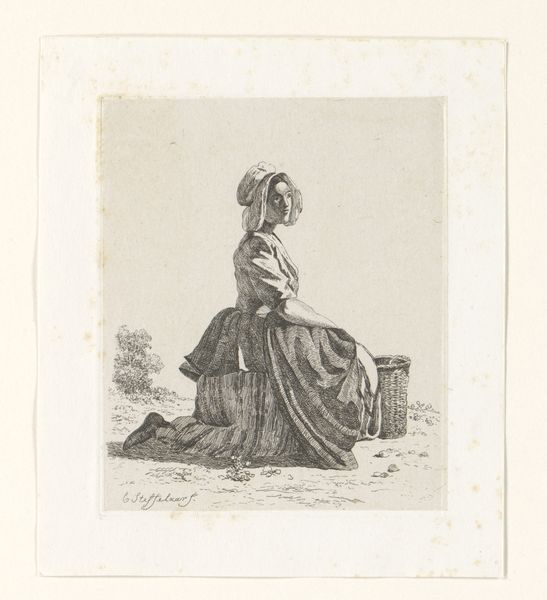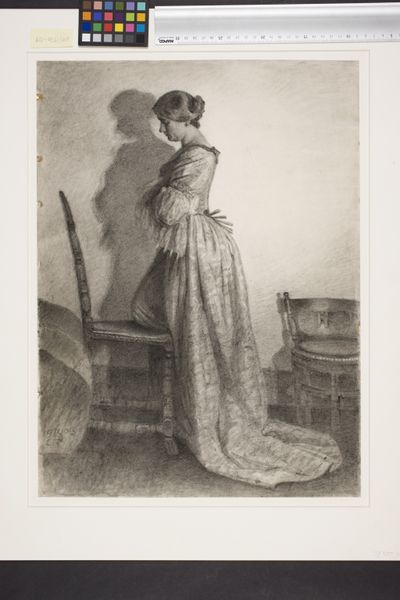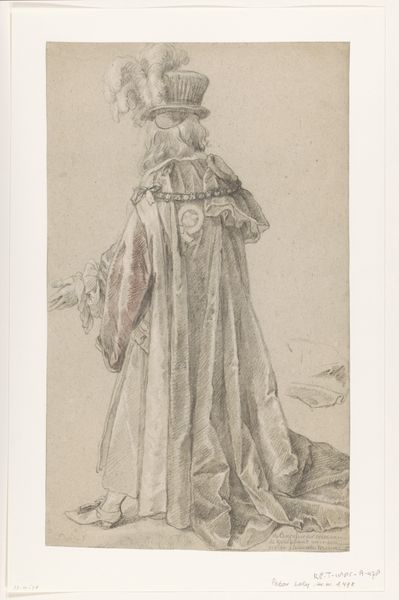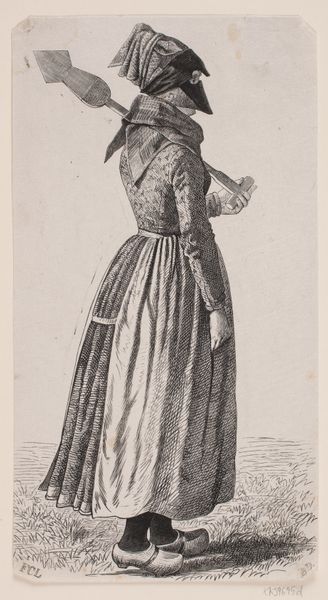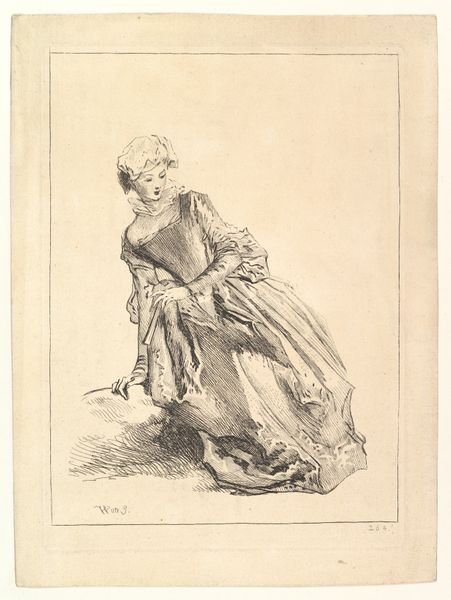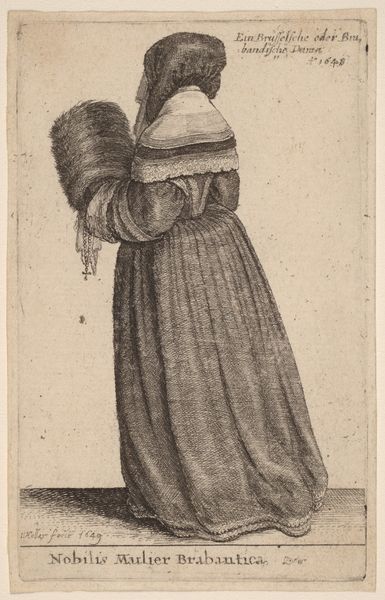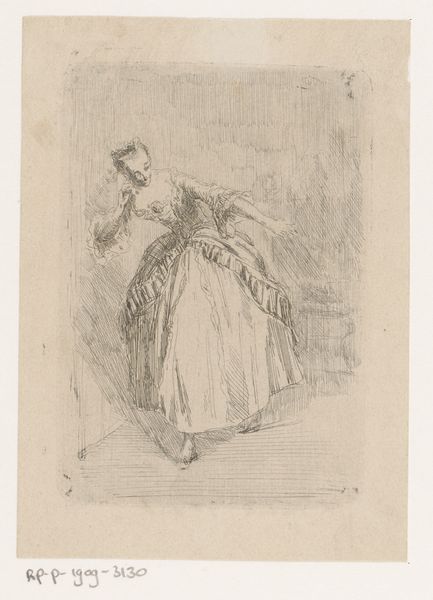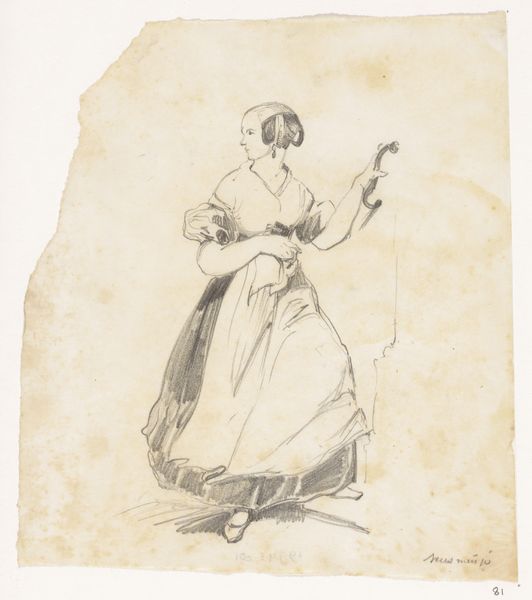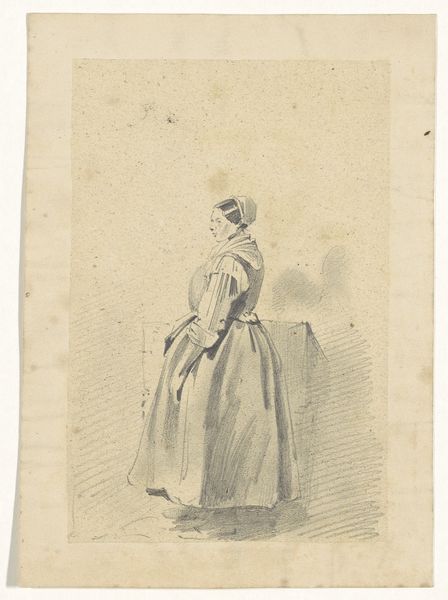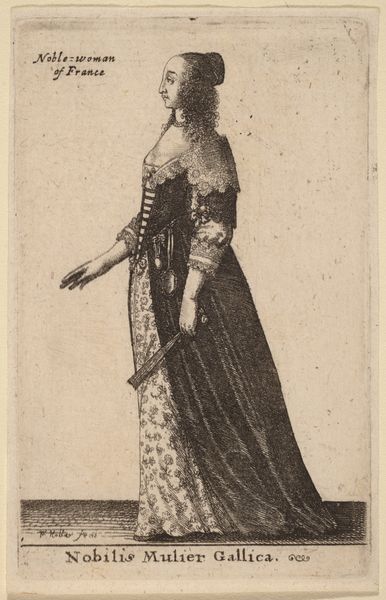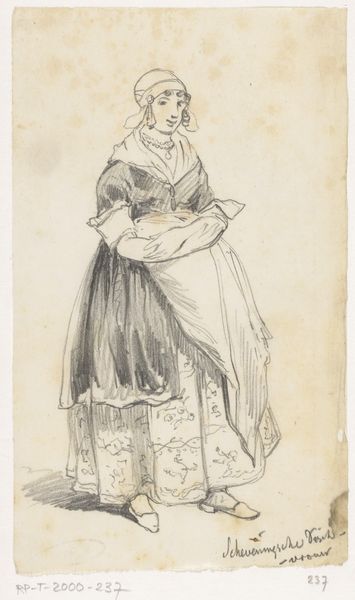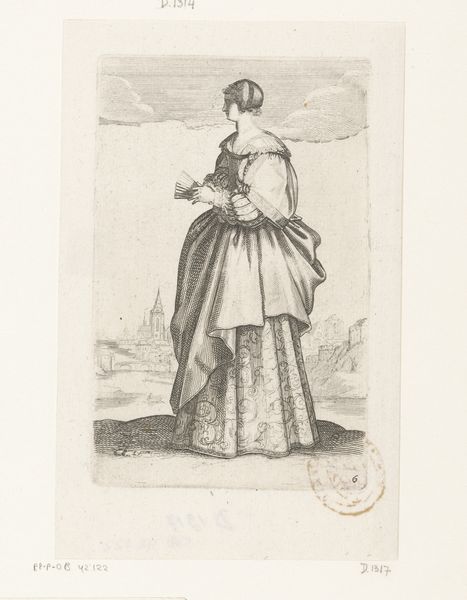
print, etching
#
portrait
# print
#
etching
#
figuration
#
symbolism
#
genre-painting
Dimensions: height 376 mm, width 305 mm
Copyright: Rijks Museum: Open Domain
Curator: Let's turn our attention to "Jonge vrouw met slepend gewaad," or "Young Woman with a Trailing Gown," an etching crafted by Joseph Dujardin in 1895. Editor: My initial reaction is of subdued drama. The woman's pose, almost turning away, and the gown cascading behind her creates a palpable sense of withdrawal. Curator: Indeed, the artist's use of etching allows for subtle gradations in tone, giving form to the woman’s elegant attire. Notice the meticulous rendering of the fabric, the textures almost palpable. It is, essentially, a masterclass in tonal variation achieved through linear means. Editor: Symbolically, that trailing gown speaks volumes. It could represent societal constraints, the weight of expectations, perhaps even the burdens of womanhood at the time. Her averted gaze might suggest resistance or a yearning for something beyond her reach. It’s an image steeped in melancholy and possible entrapment. Curator: I agree that it is rich with symbolism. However, let’s consider the formal construction. The composition emphasizes verticality, drawing the eye upward, while the trailing gown introduces a dynamic, contrasting flow. This interplay creates a visual tension. It could be argued that such techniques are used for artistic effect. Editor: But form always serves content. That flowing gown is not just a decorative element; it's an anchor, visually grounding her, suggesting she's bound to her place despite a possible longing for escape. Think of how potent that image would be for the viewers of that time. The averted gaze, the somber garb...all culturally understood signs. Curator: From a purely formal viewpoint, the artist orchestrates a ballet of lines and light. The delicate network of lines that defines the gown creates a shimmering effect, almost as though she is shimmering with internal emotion that could burst forth at any moment. Editor: So even formally, we are pointing back to the figure herself and the story of this figure, and womanhood, seems central to this etching, in its original context and in ours today. I find this so compelling, don’t you? Curator: Undoubtedly. Examining this artwork— both formally and conceptually—opens avenues into understanding how art engages in profound conversation.
Comments
No comments
Be the first to comment and join the conversation on the ultimate creative platform.
